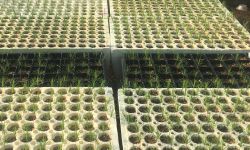Michigan can expect warmer-than-normal temps in early fall, forecaster says

LANSING – Early fall temperatures in Michigan will likely be higher than average, according to the National Weather Service, but are predicted to return to normal for the winter if long-term predictions hold up.
Cort Scholten, a meteorologist with the National Weather Service in Grand Rapids, said precipitation amounts are expected to be near normal for the next three months.
“Right now, this outlook is saying that the odds are favoring overall we’ll see more warmer-than-usual days than we will colder than usual days,” he said.
Related:
- Coast Guard throws cold water on annual Port Huron river float
- A tiny, rare butterfly gets a chance to thrive again in Michigan
- Michigan officials ask for federal disaster declaration for cherry industry
Scholten said temperatures are expected to return to near-average in November through December, but with higher-than-average precipitation expected, which could be in the form of either rain or snow.
“We’ll still have plenty of temperature swings during the winter,” he said. “Warm days, cold days, week-long cold snaps, week-long times when we’ll melt the snow.”

Scholten cautions that uncertainties increase the farther out the models go, and that predictions for the winter could change in coming months.
Last winter was influenced by a strong El Nino, which often brings warmer winters to the U.S., Scholten said, but currently neither El Nino nor La Nina are influencing the country’s weather significantly. Climate models are leaning towards a La Nina potentially forming this winter, but those predictions are still uncertain.
Scholten said warmer temperatures have occurred more often in the last couple of decades than in the past. That trend is particularly evident during the winters and for nighttime low temperatures, which have not been getting as cold as before. High temperatures have also been increasing, but not by quite as much.
“It does take more of an unusual atmospheric setup to deliver us the same amount of cold temperatures as it did in the past,” he said. “We still get cold snaps – sometimes they can get very, very cold in our region.”
He said those cold snaps are balanced out in other parts of the world by significantly warmer temperatures for a general overall warming trend.
Scholten said he expects weather this fall to follow the pattern of day-to-day changes common for Michigan, including its share of severe thunderstorms and maybe a heatwave or two.
“All these things are on the table for Michigan in the fall, as they are most years,” he said. “Weather in Michigan is always exciting no matter what happens.”
Ruth Thorton is an environmental reporting intern in a collaboration with WKAR Radio MSU’s Knight Center for Environmental Reporting and Capital News Service.
Michigan Environment Watch
Michigan Environment Watch examines how public policy, industry, and other factors interact with the state’s trove of natural resources.
- See full coverage
- Subscribe
- Share tips and questions with Bridge environment reporter Kelly House
Michigan Environment Watch is made possible by generous financial support from:
Our generous Environment Watch underwriters encourage Bridge Michigan readers to also support civic journalism by becoming Bridge members. Please consider joining today.
See what new members are saying about why they donated to Bridge Michigan:
- “In order for this information to be accurate and unbiased it must be underwritten by its readers, not by special interests.” - Larry S.
- “Not many other media sources report on the topics Bridge does.” - Susan B.
- “Your journalism is outstanding and rare these days.” - Mark S.
If you want to ensure the future of nonpartisan, nonprofit Michigan journalism, please become a member today. You, too, will be asked why you donated and maybe we'll feature your quote next time!






